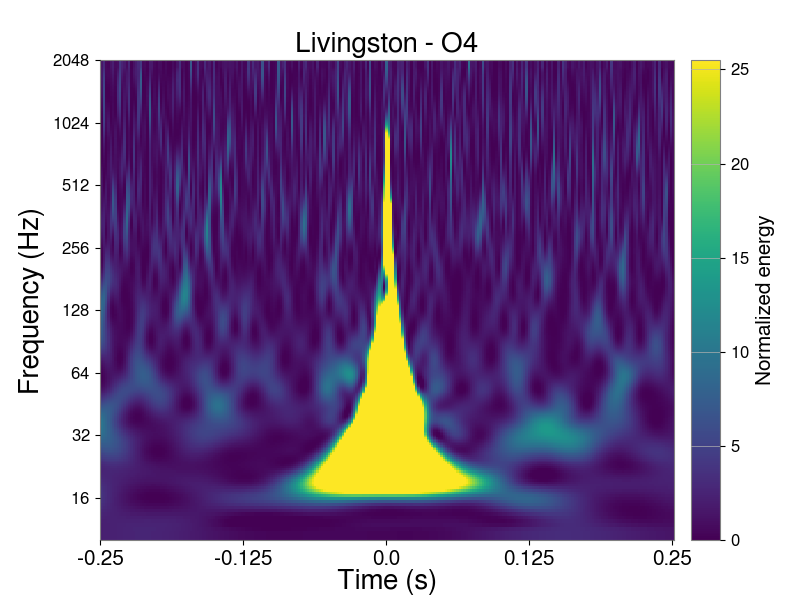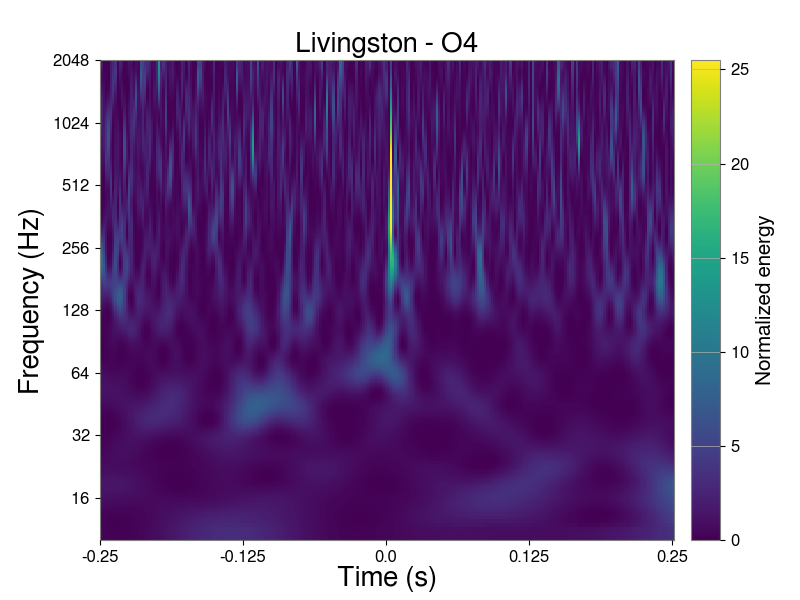¶ Blip
Description:
Blips are short glitches that usually appear with a duration of around 40 ms, typically at frequencies between 30 and 500 Hz at first (though more recently they exhibit a wider range of frequencies) and with a symmetric 'teardrop' shape in time-frequency. Generally they have more normalized energy at the lower frequency end of the teardrop.
Blips are the single most important class of glitches in Advanced LIGO. They appear in both LIGO-Hanford and LIGO-Livingston data and are the most stringent limit on our ability to detect binary black hole merger signals, particularly high-mass signals. No clear correlation to any auxiliary channel has yet been identified. As a result, there is currently no information available to veto these blips from astrophysical searches, and no good leads for how to fix them in the instruments.
Small blips below 50 Hz have their own class — Low Frequency Blip.
Cause:
Mostly unknown. A multitude of different causes must be involved, and multiple subclasses have been discussed.
Status:
Active.
Examples:



Audio Example:
Make sure to wear good headphones!

More Information:
- For more detailed information about blip glitches, see this paper